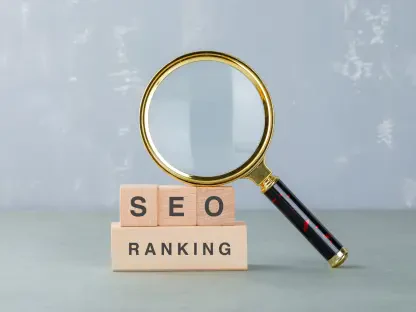The Rise of AI and SaaS in Digital Marketing
In an era where digital presence defines business success, imagine a landscape where creating compelling content and optimizing search engine rankings no longer drain resources but instead drive unprecedented returns. This is the reality unfolding in 2025, as artificial intelligence (AI) and Software-as-a-Service (SaaS) platforms reshape the digital marketing industry. These technologies are not just tools; they are catalysts for a fundamental shift, enabling companies to achieve higher efficiency and scalability in their marketing efforts. The integration of AI with SaaS solutions is proving to be a game-changer, offering innovative ways to enhance search engine optimization (SEO) and maximize return on investment (ROI).
The scope of this transformation is vast, particularly in AI-powered content creation, which is revolutionizing how brands communicate with their audiences. Leading SaaS providers like Synthesia and Jasper AI are at the forefront, delivering tools that automate and personalize content at scale. Synthesia, for instance, streamlines video production, while Jasper AI focuses on generating high-quality written material tailored to specific needs. The market for such technologies is experiencing rapid expansion, with projections estimating a valuation of $10.59 billion by 2033, driven by a compound annual growth rate (CAGR) of 19.4%.
This growth reflects a broader trend of digital marketing evolving into a data-driven, automated field where manual processes are becoming obsolete. Businesses adopting these platforms gain a competitive edge through real-time insights and cost-effective solutions. As AI and SaaS continue to merge, they are setting new benchmarks for what marketing teams can achieve, paving the way for a future where strategic decisions are informed by precision and predictive analytics.
Key Trends Driving the AI Content Revolution
Evolving SEO Practices and Marketing Efficiency
The landscape of SEO has undergone a dramatic overhaul with the advent of AI-driven strategies. Traditional tactics like keyword stuffing have given way to sophisticated approaches that utilize large language models to decode search intent and craft personalized content. These models analyze vast datasets to predict user behavior, ensuring that content resonates with target audiences on a deeper level, thus improving engagement and relevance.
This shift has led to remarkable gains in efficiency for marketing teams. Projections indicate that by adopting AI tools, businesses can reduce content creation costs by up to 70% within the next few years. Furthermore, the time spent on producing content is expected to decrease by 40%, freeing up resources for strategic planning and creative innovation. Such efficiencies are redefining operational workflows across industries.
Beyond cost and time savings, the impact on campaign performance is notable. AI enables the delivery of content that aligns closely with consumer expectations, enhancing user experience and driving better outcomes. This precision in targeting and optimization is why many organizations are pivoting toward technology-led marketing solutions, recognizing the potential for sustained growth and improved profitability.
Market Growth and Performance Metrics
The market for AI SEO tools is on a steep upward trajectory, with current estimates valuing it at $1.2 billion in 2025 and forecasting growth to $4.5 billion by 2033, reflecting a CAGR of 15.2%. This expansion is fueled by the increasing reliance on data-driven insights to inform marketing strategies, as companies seek to capitalize on the digital economy’s vast opportunities. The numbers underscore a clear demand for scalable, effective solutions.
Performance metrics further validate this trend, particularly for e-commerce platforms leveraging AI-driven campaigns. Reports show a 45% surge in organic traffic for businesses using these tools, alongside a 38% increase in conversion rates. Such figures highlight how AI not only attracts audiences but also converts interest into tangible results, a critical factor for revenue growth.
These improvements are not limited to specific sectors but are becoming a standard expectation across digital marketing. As more enterprises witness these measurable benefits, adoption rates are accelerating, creating a ripple effect that pushes innovation and competition within the AI and SaaS space. The momentum suggests a future where such tools are indispensable for maintaining market relevance.
Challenges in Adopting AI and SaaS for SEO and Marketing
Despite the promising advancements, integrating AI and SaaS into marketing strategies is not without hurdles. A significant concern is the quality of AI-generated content, with 65% of SEO professionals pointing out a lack of human nuance in automated outputs. This gap often results in material that feels mechanical or fails to capture the emotional depth needed for certain campaigns, posing a risk to brand authenticity.
Another challenge lies in market saturation, as over 500 AI content tools currently vie for attention. This crowded space makes differentiation a critical issue, necessitating unique value propositions through proprietary technology or niche-specific offerings. Platforms that fail to stand out risk being overshadowed, highlighting the importance of innovation in sustaining competitive advantage.
To address these issues, hybrid models are gaining traction, blending AI efficiency with human oversight. Solutions like Copy.ai’s approach, which incorporates an “AI plus human review” process, aim to balance speed with quality. Such strategies suggest a path forward where technology and creativity coexist, ensuring that businesses can leverage automation without sacrificing the personal touch that connects with audiences.
Regulatory and Compliance Considerations in AI Marketing Tools
Navigating the regulatory landscape is a crucial aspect of adopting AI and SaaS platforms in marketing. Data privacy laws, such as those governing user information, impose strict guidelines on how data can be collected and utilized. Additionally, content authenticity standards are becoming more stringent, requiring transparency in distinguishing AI-generated material from human-created content to maintain consumer trust.
Compliance and security are particularly vital for cloud-based SaaS models, which command a 77.5% revenue share in 2025. These platforms must adhere to rigorous standards to protect sensitive data and ensure operational integrity. Failure to meet these requirements can erode industry trust and hinder adoption rates, making robust security frameworks a non-negotiable priority for providers.
The evolving nature of regulations demands that companies remain agile, continuously updating their practices to align with legal expectations. This dynamic environment underscores the need for SaaS vendors to invest in compliance infrastructure, not only to mitigate risks but also to build confidence among users. As regulations tighten globally, proactive adaptation will be key to sustaining growth in this sector.
The Future of AI and SaaS in Digital Marketing
Looking ahead, emerging technologies promise to further refine the capabilities of AI in content creation. Innovations like retrieval-augmented generation (RAG) and reinforcement learning from human feedback (RLHF) are enhancing the quality and relevance of automated outputs. These advancements address existing limitations, offering more nuanced and contextually accurate content that rivals human efforts.
Enterprise adoption is another driving force, with 83% of SEO professionals reporting significant performance gains from AI tools. This widespread acceptance signals a maturing market where businesses of all sizes recognize the strategic value of automation. Alongside this trend, potential disruptors loom on the horizon, challenging established players to innovate continuously or risk losing ground.
Investment opportunities are also abundant, particularly in early-stage SaaS platforms that demonstrate strong infrastructure and niche focus. Amid global economic shifts, these ventures present a compelling case for investors seeking high-growth prospects. The combination of technological progress and market demand positions AI and SaaS as pivotal elements in the next wave of digital marketing evolution.
Conclusion and Strategic Recommendations
Reflecting on the insights gathered, it becomes evident that AI and SaaS platforms have already begun to redefine the benchmarks of SEO and marketing ROI by 2025. The journey reveals a landscape transformed by efficiency gains, cost reductions, and measurable performance uplifts, positioning these technologies as indispensable tools for modern businesses. Each advancement has contributed to a narrative of progress, despite challenges that demand careful navigation.
For businesses, the next step involves embracing AI-driven SaaS solutions with a focus on integrating hybrid models that ensure content quality while maximizing automation benefits. Prioritizing platforms with robust compliance and security measures is also critical to safeguard operations and maintain customer trust. These actions promise to sustain competitive edges in an increasingly digital marketplace.
Investors, meanwhile, find a clear directive in targeting SaaS providers with strong enterprise partnerships and innovative, niche-specific offerings. Such focus areas offer resilience against market saturation and align with long-term growth trends. By strategically positioning capital in these high-potential arenas, stakeholders can play a pivotal role in shaping the future of digital marketing, ensuring that the momentum of this technological revolution continues unabated.









